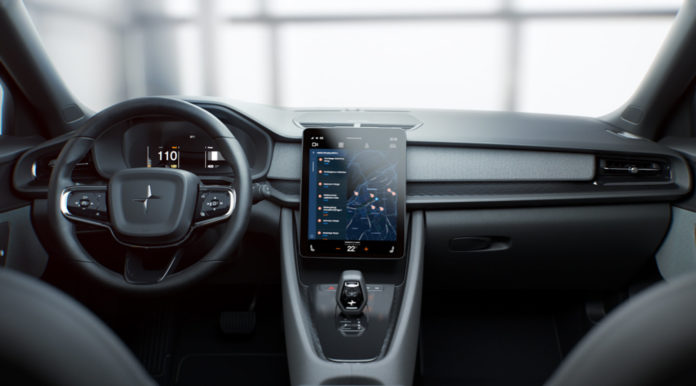
Google’s Android Automotive open-source mobile operating system will soon be open to some outside developers, according to the company. The goal is to allow third-party developers to create new music and entertainment apps for drivers using Google’s system (which shouldn’t be confused with Android Auto, the company’s platform for pairing phones with car infotainment systems.) The news comes just in advance of the Google I/O 2019 show, which takes place this week at the Shoreline Amphitheatre in Mountain View, California.
Back in January, Google announced that the first vehicle to debut Android Automotive would be Volvo’s all-electric Polestar 2. Thanks to the Android Automotive OS, the Polestar 2’s infotainment system will feature embedded Google services such as Google Assistant, Google Maps and the Google Play Store, as well as third-party services like Spotify, NPR and YouTube Music. Ultimately, Volvo is planning to adapt Android Automotive OS into the company’s next-generation Sensus infotainment system.
Android Automotive is built on the foundation of Android Auto, according to VentureBeat’s Emil Protalinski.
“The company already put a lot of work into supporting a variety of screen sizes, input methods, OEM customizations, and regional driver safety guidelines with Android Auto,” he wrote. “That work isn’t being lost with Android Automotive OS — the company wants to make building embedded apps for cars at scale as ‘easy’ as it is building Android apps at scale for the myriad of mobile devices.”
Going forward, Google plans to expand into other categories of apps as well such as navigation, Haris Ramic, Google’s product lead for Android Automotive told TechCrunch in a recent interview, including mapping, navigation and messaging.
Other car makers are planning to move forward with Android Automotive in the future. The operating system is expected to power FCA’s upcoming Uconnect infotainment system, and Renault-Nissan-Mitsubishi Alliance has announced plans to move to the OS.
The Android Automotive OS apps will be available via the Google Play Store. Developers can learn more at the Google I/O show presentation, “How To Build Android Apps for Cars.”












